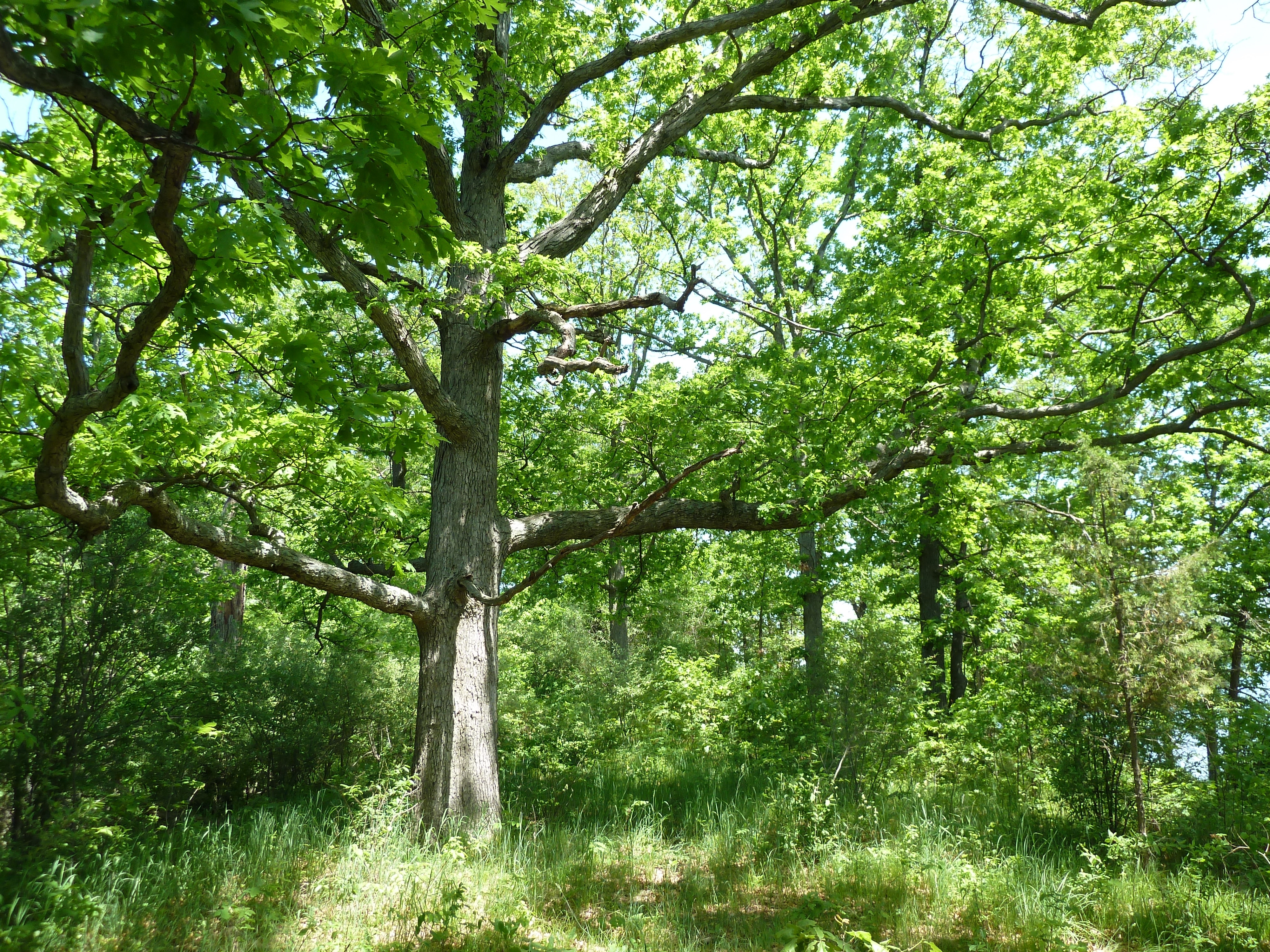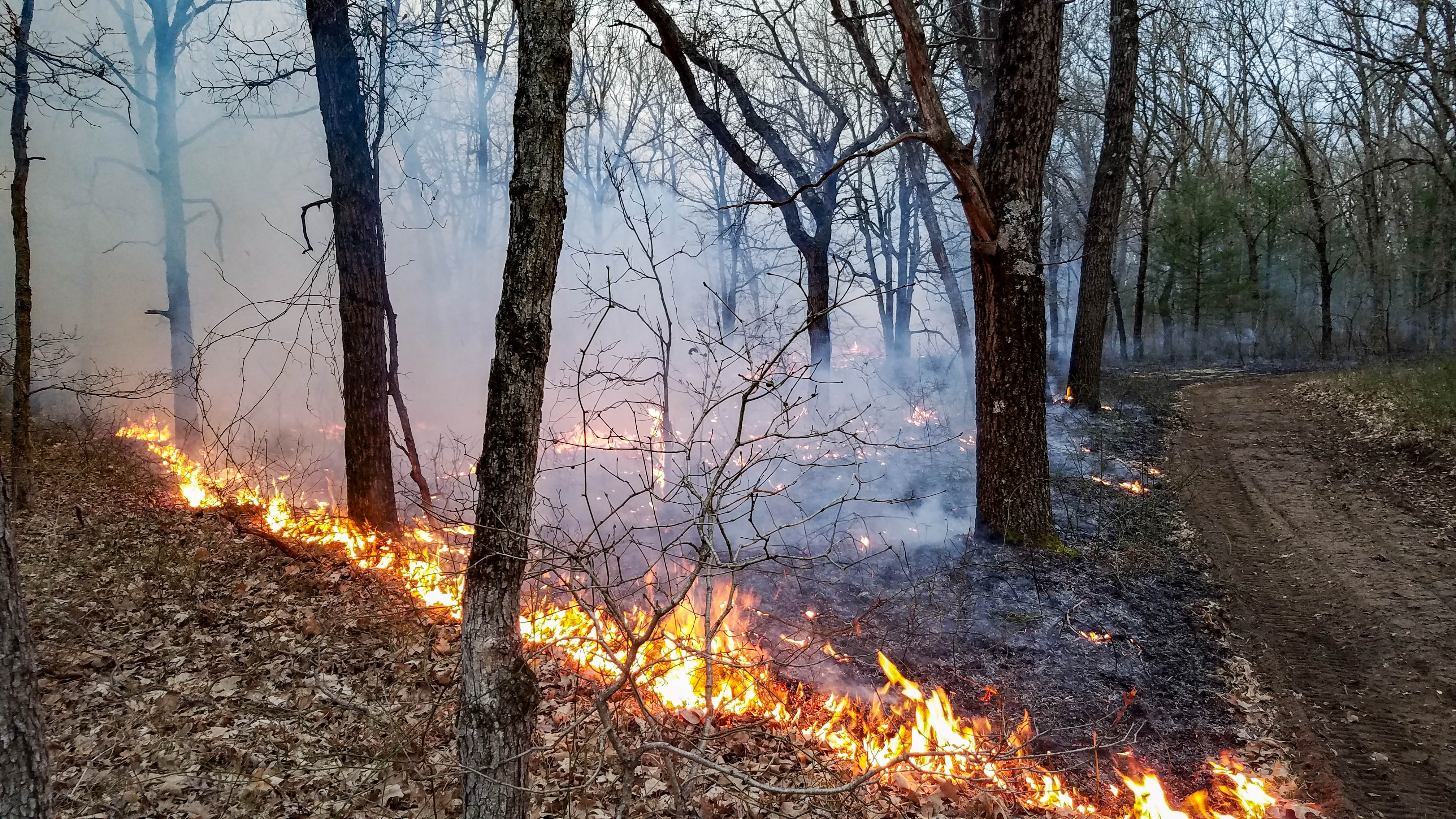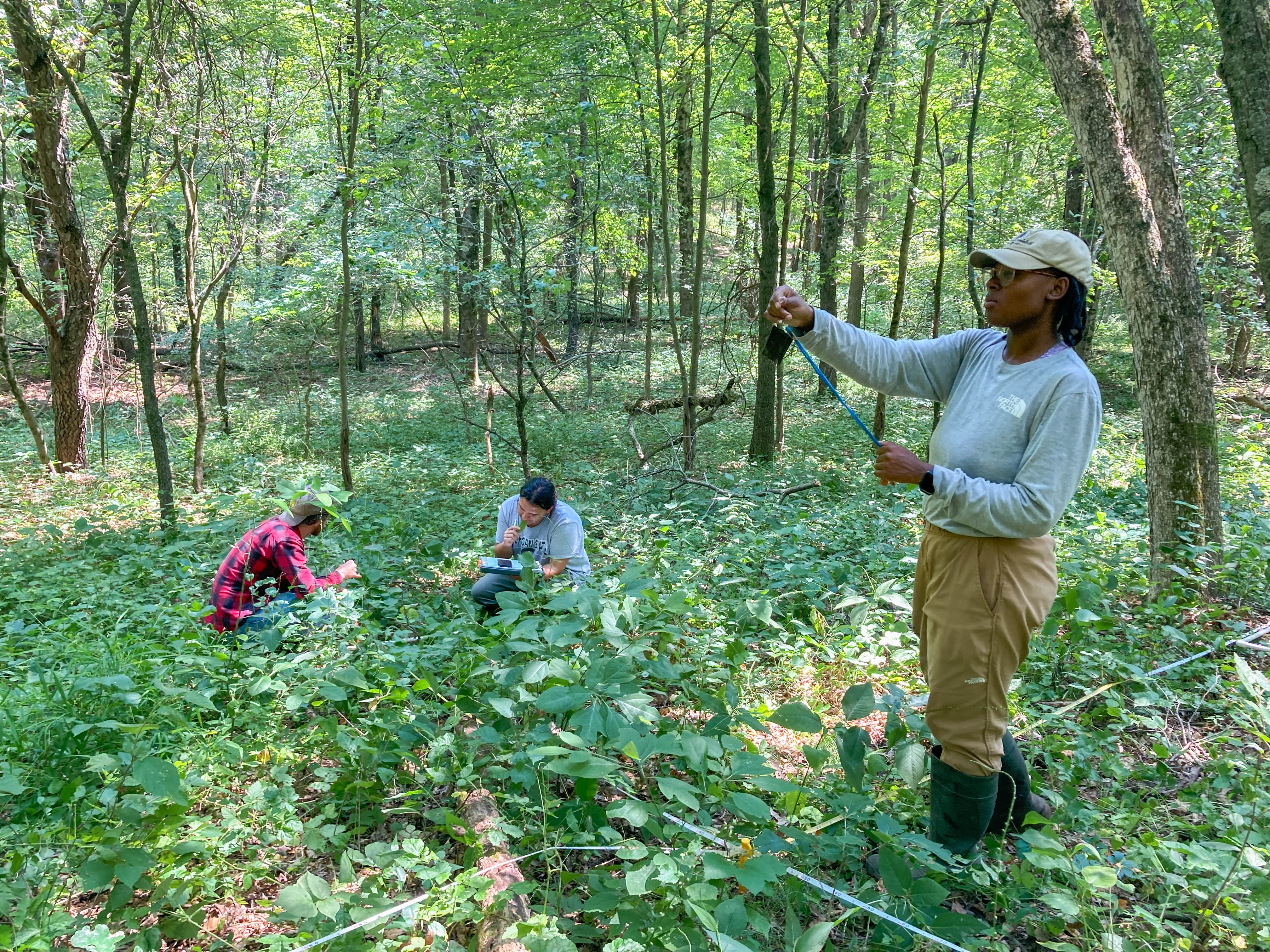Reuniting fire and oak: A unique partnership for sustaining Michigan’s oak forests
A new partnership helps shed light on the benefits of prescribed fire for Michigan’s oak forests.

It would be 21 years following the birth of Michigan State University Extension before the U.S. Geological Survey (USGS) Cooperative Research Unit (CRU) program would be established, and another 88 years before the two would become partners. MSU Extension was founded in 1914 to “help people improve their lives through an educational process that applies knowledge to critical issues, needs and opportunities.”
Likewise, the USGS CRU program was founded in 1935 to “enhance graduate education in fisheries and wildlife sciences and to facilitate research and technical assistance between natural resource agencies and universities on topics of mutual concern.” It was not until 2023 that the CRU program would expand to Michigan and find a home on the campus of Michigan State University.
Housed within the MSU’s Department of Fisheries and Wildlife, the Michigan CRU is quickly establishing itself as an applied research center for various fisheries and wildlife research needs of participating cooperators. From the Michigan Department of Natural Resources (DNR) to the U.S. Fish and Wildlife Service, cooperator needs are met through research projects tailored to train the next generation of scientists. But I am getting a little ahead of myself by several hundred years.
Michigan’s vast oak savannas
Prior to either of these institutions laying their foundations on Michigan soil, Michigan’s southern landscape was a vast expanse of oak-hickory forest and oak savanna shaped by occasional to frequent surface fires during the passing millennia. Forests of white oak, red oak, black oak, and hickory filled the canopy where fire sometimes spared its reach, while scattered oaks, stunted and gnarled by frequent fires and harsh winds, dotted grassy savannas.
With little competition from neighboring trees, these savanna oaks were free to stretch hardy limbs far beyond their trunks. Massive flocks of passenger pigeons roosted on their strong branches and elk took refuge in their cool shade. Indigenous peoples, along with lightning strikes, shaped these conditions through frequent burning of the landscape to maintain the structure and species composition that benefited diverse human and wildlife needs.

However, with the oppression and forced removal of Indigenous peoples and subsequent fire suppression for more than 150 years, the landscape today is nearly unrecognizable from this not-so-distant past.
Passenger pigeons are extinct, elk roam a fraction of their historic range, and oak trees now keep their mighty limbs close in the confines of forests that no longer remember the rejuvenating breath of a good fire.
Restoring balance to our ecosystems
Though passenger pigeons are gone forever, fire can return if we allow it. And today a handful of dedicated biologists, foresters, and scientists are working to bring fire back to Michigan’s ecosystems whose functions intricately depend upon this defining force. For example, the DNR has been using prescribed fire for years to restore the balance between fire and oak ecosystems across southern Michigan.
But decades upon decades of fire suppression across the landscape has shifted oak ecosystems far beyond their historical equilibrium with fire, and the complexities of natural ecosystems and fire behavior has made its application a formidable challenge.

To shed light on these complexities, the DNR proposed a research project aimed at disentangling the outcomes of using fire and other management activities to restore and sustain Michigan’s diverse oak ecosystems. In 2023 the USGS CRU, MSU Extension’s Michigan Natural Features Inventory (MNFI), and the Applied Forest and Wildlife Ecology Laboratory (AFWEL) joined forces to take on the challenge of this project. Based within the Department of Fisheries and Wildlife, this research supports my doctoral dissertation project in partnership with MNFI botanists and ecologists.
The project has two main branches. First, to retrospectively investigate how prescribed fires and other oak management actions affect oak regeneration, plant community composition, and wildlife use of managed oak forests. Second, to experimentally measure the effects of forthcoming actions using a before and after treatment approach.
Heeding the lessons of fire
Together these efforts will help us develop a suite of easily collected metrics that can be leveraged by biologists and foresters in their evaluations of long-term oak management outcomes.

Although our oak ecosystems may never look the way they did 1,000, or even 500, years ago, we can still listen to the lessons fire has to share and harness its beneficial powers that shaped these natural communities.
Combined with the careful guidance of cooperative science-based management, we may just be able to hold on to the precious oaks we have left.
Funding support for the author was provided by the Ambrose Pattullo Fund for Environmental Issues at Michigan State University.
For more information about the Michigan Natural Features Inventory, visit mnfi.anr.msu.edu.



 Print
Print Email
Email

